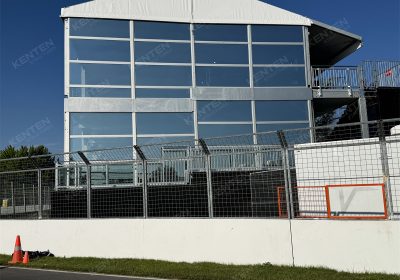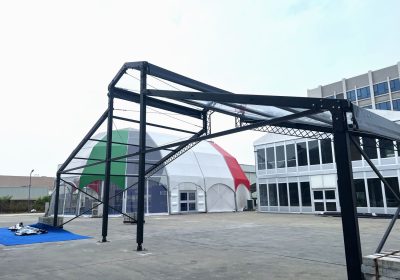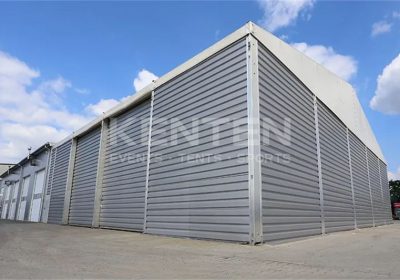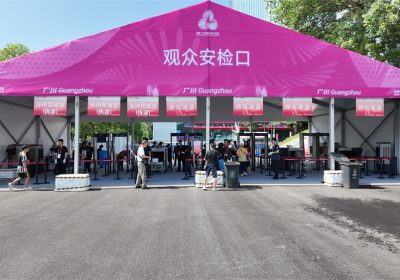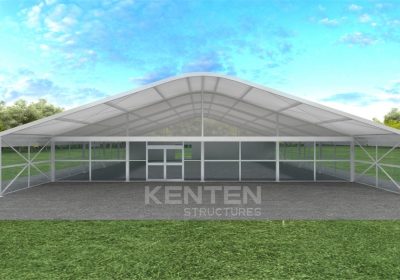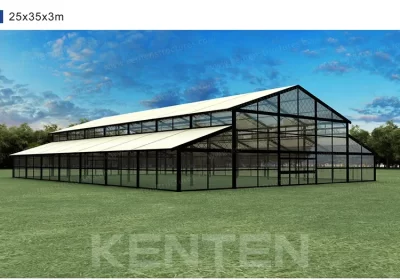Aluminum Structure Tent in Badminton Court Construction
Badminton is a popular racket sport that requires a well-defined court with specific dimensions to ensure fair play and optimal performance. The dimensions of a badminton court play a crucial role in the game as it directly affects the movement, strategy and stroke execution of the players. Understanding the exact dimensions of a badminton court is essential to establishing the proper playing environment and maintaining the integrity of the game. This article will detail the standard dimensions of a badminton court, highlight how to build an indoor badminton court using an Aluminum Structure Tent, and provide some practical advice.
Standard dimensions of a badminton court
Singles court:
- Width: 19.68 feet (5.99 meters)
- Length: 44 feet (13.4 meters)
Doubles court:
- Width: 20 feet (6.1 meters)
- Length: 44 feet (13.4 meters) 3.
serving lines:
- Singles: Serve line is 6.4 feet (1.95 meters) from the back sideline.
- Doubles: 6.1 feet (1.86 meters) from the back sideline
Net Height:
- Center height: 1.55 m (5.1 ft)
- Height at ends: 1.524 m (5 ft)
Indoor and Outdoor Badminton Courts
There are two types of badminton courts: indoor and outdoor. Although they have the same dimensions, the structure and conditions of use differ.
- Indoor Badminton Courts: usually have fixed ceilings and walls, providing a more stable and controlled playing environment, suitable for professional training and competitions.
- Outdoor badminton courts: exposed to the natural environment and may be affected by weather changes, suitable for leisure and recreational use.
Advantages of Aluminum Structure Tent
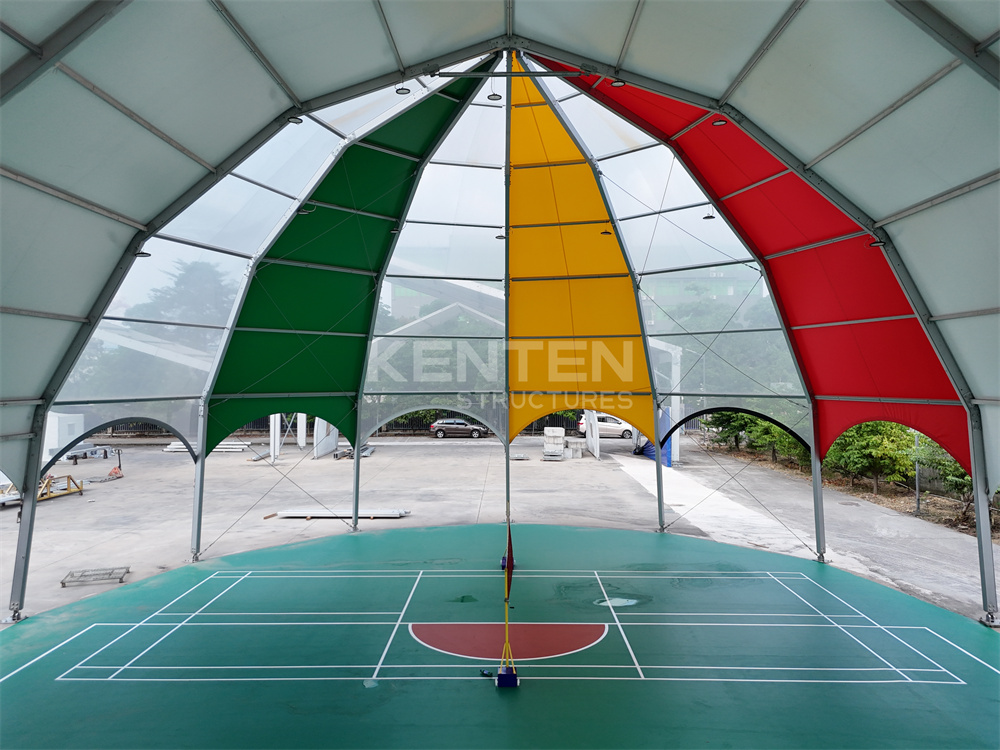
Quick installation:
- Modularized design: all components are pre-produced in the factory and only need to be assembled on site, which greatly shortens the construction cycle.
- Simple construction: the installation process is simple and fast, usually takes only a few days, without the need for complex construction equipment and technology.
Cost effectiveness:
- Low material cost: Aluminum alloy material is less expensive compared to traditional steel and has good corrosion resistance, which reduces the maintenance cost in the later stage.
- Low labor cost: quick installation reduces labor input, which further reduces the overall construction cost.
- No need for foundation treatment: tents do not require high ground level, in most cases no complex foundation treatment is needed, saving foundation construction costs.
High flexibility:
- Reusable: Canopies can be easily disassembled and re-installed for temporary or mobile site requirements.
- Strong expandability: modules can be added or removed at any time to adjust the size and layout of the site according to actual needs.
Stable structure:
- High-strength material: aluminum alloy is characterized by high strength and light weight, which ensures that the canopy can remain stable under various weather conditions.
- Wind-resistant performance: specially designed connectors and reinforcement measures enable the canopy to resist strong winds and heavy rain.
Environmental protection and energy saving:
- Eco-friendly materials: aluminum alloy materials can be recycled, in line with environmental protection requirements.
- Natural Lighting: Optional transparent roofing materials can be used to increase natural lighting and reduce lighting energy consumption.

Using KENTEN Aluminum Structure Tent to build an indoor badminton court.
Measure the dimensions of the badminton court:
- Accurately measure the available space, including the length, width and height of the room or outdoor area where the court is located. Make sure the dimensions meet the requirements for singles or doubles matches.
Choose the right canopy supplier:
- Choosing KENTEN is a very good choice. KENTEN has more than 20 years of experience in exporting tents and has a team of professional technicians who can calculate the safest frame structure and provide the best solution according to the wind load and snow load in your city.
Setting up tents:
- KENTEN’s aluminum structure tents are the most suitable tents for badminton court venues because these tents have no obstacles in the middle, are spacious and the height can be customized. According to the characteristics of the badminton court, choose the right size of the tent.
Mark the size of the court:
- Mark the length and width of the badminton court on the ground with string or chalk. The singles court is 13.40 meters long and 5.18 meters wide; the doubles court is 13.40 meters long and 6.10 meters wide.
Draw the baseline:
- Underlines are drawn at the end of the long and short sides respectively; these are called end lines. The width of the bottom line should be 4 centimeters, and the outer edge of the line should be the boundary of the court.
Draw side lines:
- Draw sidelines on each side of the long and short sides. The sidelines are 0.46 meters from the finish line in singles matches and 0.76 meters from the finish line in doubles matches.
Draw the center line:
- A centerline is drawn in the center of the court to divide the court into two equal parts. The length of the centerline should be 13.40 m. The distance from the center of the centerline to each side should be 6.7 m. This is the end point of the centerline.
Draw the serving lines:
- The front and back serve lines for singles and doubles are measured from the four vertices of each doubles court to the end lines. The distance from the end line for both singles and doubles front serves was 4.68 meters and the distance from the end line for both doubles and singles back serves was 0.76 meters.
Conclusion.
The dimensions of a badminton court are critical to the game, including the standard requirements for length, width and clear height. Indoor badminton courts offer significant advantages over outdoor venues, such as providing a more stable and controlled environment for professional training and matches. Building an indoor badminton court with a KENTEN Aluminum Structure Tent not only takes full advantage of these benefits, but also provides excellent durability and flexibility.KENTEN tents are designed to be flexible, with no intermediate barriers, and can be quickly erected and customized to suit the needs of different regions, providing high-quality indoor badminton courts that ensure compliance with tournament standards, and promoting the development of the sport of badminton.
We hope the above introduction can help you better understand how to use Aluminum Structure Tent to build an indoor badminton court quickly and cost-effectively. If you have any specific needs or questions, please feel free to contact us. We look forward to cooperating with you!

